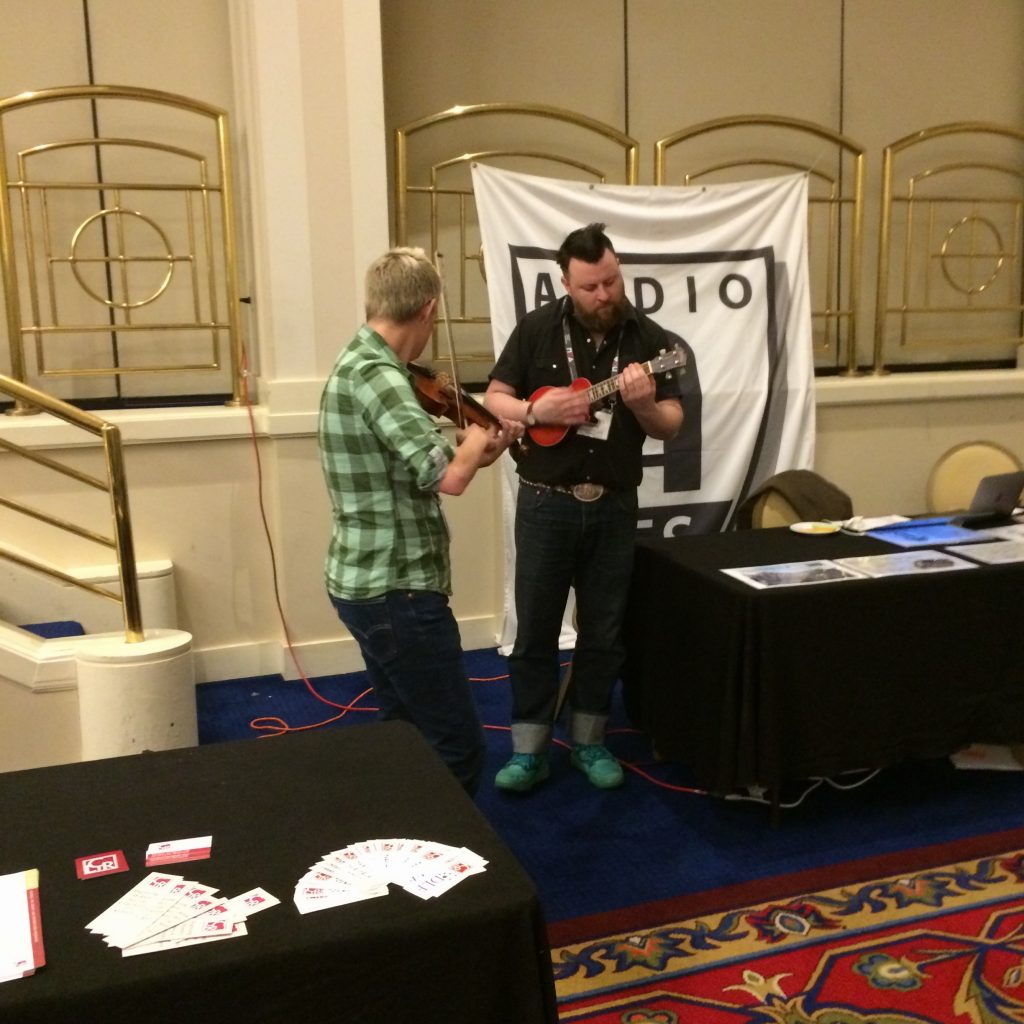Last week I had the opportunity to attend the 52nd Association for Recorded Sound Collections Annual Conference in Baltimore, MD. From the ARSC website:
Founded in 1966, the Association for Recorded Sound Collections, Inc. is a nonprofit organization dedicated to the preservation and study of sound recordings—in all genres of music and speech, in all formats, and from all periods.
ARSC is unique in bringing together private individuals and institutional professionals. Archivists, librarians, and curators representing many of the world’s leading audiovisual repositories participate in ARSC alongside record collectors, record dealers, researchers, historians, discographers, musicians, engineers, producers, reviewers, and broadcasters.
ARSC’s vitality springs from more than 1000 knowledgeable, passionate, helpful members who really care about sound recordings.
ARSC Annual Conferences encourage open sharing of knowledge through informative presentations, workshops, and panel discussions. Tours, receptions, and special local events heighten the camaraderie that makes ARSC conferences lively and enjoyable.
This quote highlights several of the things that have made ARSC resources valuable and educational to me as the Audio Production Specialist at Duke Libraries:
- The group’s membership includes both professionals and enthusiasts from a variety of backgrounds and types of institutions.
- Members’ interests and specialties span a broad array of musical genres, media types, and time periods.
- The organization serves as a repository of knowledge on obscure and obsolete sound recording media and technology.
This year’s conference offered a number of presentations that were directly relevant to our work here in Digital Collections and Curation Services, highlighting audio collections that have been digitized and the challenges encountered along the way. Here’s a quick recap of some that stood out to me:
- “Uncovering the Indian Neck Folk Festival Collection” by Maya Lerman (Folklife Center, Library of Congress). This presentation showcased a collection of recordings and related documentation from a small invitation-only folk festival that ran from 1961-2014 and included early performances from Reverend Gary Davis, Dave Van Ronk, and Bob Dylan. It touched on some of the difficulties in archiving optical and born-digital media (lack of metadata, deterioration of CD-Rs) as well as the benefits of educating prospective donors on best practices for media and documentation.
- “A Garage in South Philly: The Vernacular Music Research Archive of Thornton Hagert” by David Sager and Anne Stanfield-Hagert. This presentation paid tribute to the massive jazz archive of the late Mr. Hagert, comprising over 125,000 items of printed music, 75,000 recordings, 5,500 books, and 2,000 periodicals. It spoke to the difficulties of selling or donating a private collection of this magnitude without splitting it up and undoing the careful, but idiosyncratic organizational structure as envisioned by the collector.
- “Freedom is a Constant Struggle: The Golden State Mutual Sound Recordings” by Kelly Besser, Yasmin Dessem and Shanni Miller (UCLA Library). This presentation covered the audio material from the archive of an African American-owned insurance company founded in 1925 in the Bay Area. While audio was only a small part of this larger collection, the speakers demonstrated how it added additional context and depth to photographs, video, and written documents. They also showed how this kind of archival audio can be an important tool in telling the stories of previously suppressed or unheard voices.
- “Sounds, Sights and Sites of Activism in ’68” by Guha Shankar (Library of Congress). This presentation examined a collection of recordings from “Resurrection City” in Washington, DC. This was an encampment that was part of the Poor People’s Campaign, a demonstration for human rights organized by Martin Luther King, Jr. prior to his assassination in 1968. The talk showed how these archival documents are being accessed and used to inform new forms of social and political activism and wider circulation via podcasts, websites, public lecture and exhibitions.
The ARSC Conference also touched on my personal interests in American traditional and vernacular music, especially folk and blues from the early 20th Century. Presentations on the bluegrass scene in Baltimore, blues guitarist Johnny Shines, education outreach by the creators of PBS’s “American Epic” documentaries, and Hickory, NC’s own Blue Sky Boys provided a welcome break from favorite archivist topics such as metadata, workflows, and quality control. Other fun parts of the conference included an impromptu jam session, a silent auction of books & records, and posters documenting the musical history of Baltimore. True to the city’s nickname, I was charmed by my time in Baltimore and inspired by the amazingly diverse and dedicated work towards collecting and preserving our audio heritage by the ARSC community.





